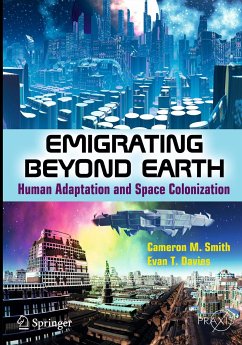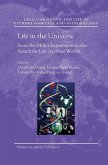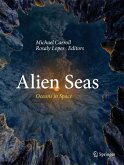For four million years humankind has been actively expanding geographically and in doing so has adapted to a wide variety of hostile environments. Now we are looking towards the ultimate adaptation - the colonization of space. Emigrating Beyond Earth illustrates that this is not a technocratic endeavor, but a natural continuation of human evolution; a journey not just for the engineer and rocket scientist, but for everyman. Based on the most current understanding of our universe, human adaptation and evolution, the authors explain why space colonization must be planned as an adaptation to, rather than the conquest of, space.
Emigrating Beyond Earth argues that space colonization is an insurance policy for our species, and that it isn't about rockets and robots, it's about humans doing what we've been doing for four million years: finding new places and new ways to live.
Applying a unique anthropological approach, the authors outline a framework for continued human space exploration and offer a glimpse of a possible human future involving interstellar travel and settlement of worlds beyond our own.
Emigrating Beyond Earth argues that space colonization is an insurance policy for our species, and that it isn't about rockets and robots, it's about humans doing what we've been doing for four million years: finding new places and new ways to live.
Applying a unique anthropological approach, the authors outline a framework for continued human space exploration and offer a glimpse of a possible human future involving interstellar travel and settlement of worlds beyond our own.
Dieser Download kann aus rechtlichen Gründen nur mit Rechnungsadresse in A, B, BG, CY, CZ, D, DK, EW, E, FIN, F, GR, HR, H, IRL, I, LT, L, LR, M, NL, PL, P, R, S, SLO, SK ausgeliefert werden.
From the book reviews:
"This book would be a good introduction to the idea of space colonization for those who otherwise might consider it as an utopian idea while reading about the technologies necessary for transporting hundreds of people to distant locations in the Solar System and possibly terraforming a planet. 'Emigrating Beyond Earth' shows it all more in a way that's easily understandable and logical without too much previous knowledge." (Kadri Tinn, Astromadness.com, September, 2014)
"A basic premise of this work is that 'human migration into space will be the continuation of the natural process of evolution.' ... the authors examine the pros and cons of colonization and conclude that it both can and should be attempted. To support their case, they note some potential catastrophes that could lead to the extinction of humans, and believe that space colonization may be necessary for the survival of the human species. ... Summing Up: Recommended. Lower- and upper-division undergraduates and general readers." (T. Barker, Choice, Vol. 50 (6), February, 2013)
"This book would be a good introduction to the idea of space colonization for those who otherwise might consider it as an utopian idea while reading about the technologies necessary for transporting hundreds of people to distant locations in the Solar System and possibly terraforming a planet. 'Emigrating Beyond Earth' shows it all more in a way that's easily understandable and logical without too much previous knowledge." (Kadri Tinn, Astromadness.com, September, 2014)
"A basic premise of this work is that 'human migration into space will be the continuation of the natural process of evolution.' ... the authors examine the pros and cons of colonization and conclude that it both can and should be attempted. To support their case, they note some potential catastrophes that could lead to the extinction of humans, and believe that space colonization may be necessary for the survival of the human species. ... Summing Up: Recommended. Lower- and upper-division undergraduates and general readers." (T. Barker, Choice, Vol. 50 (6), February, 2013)









